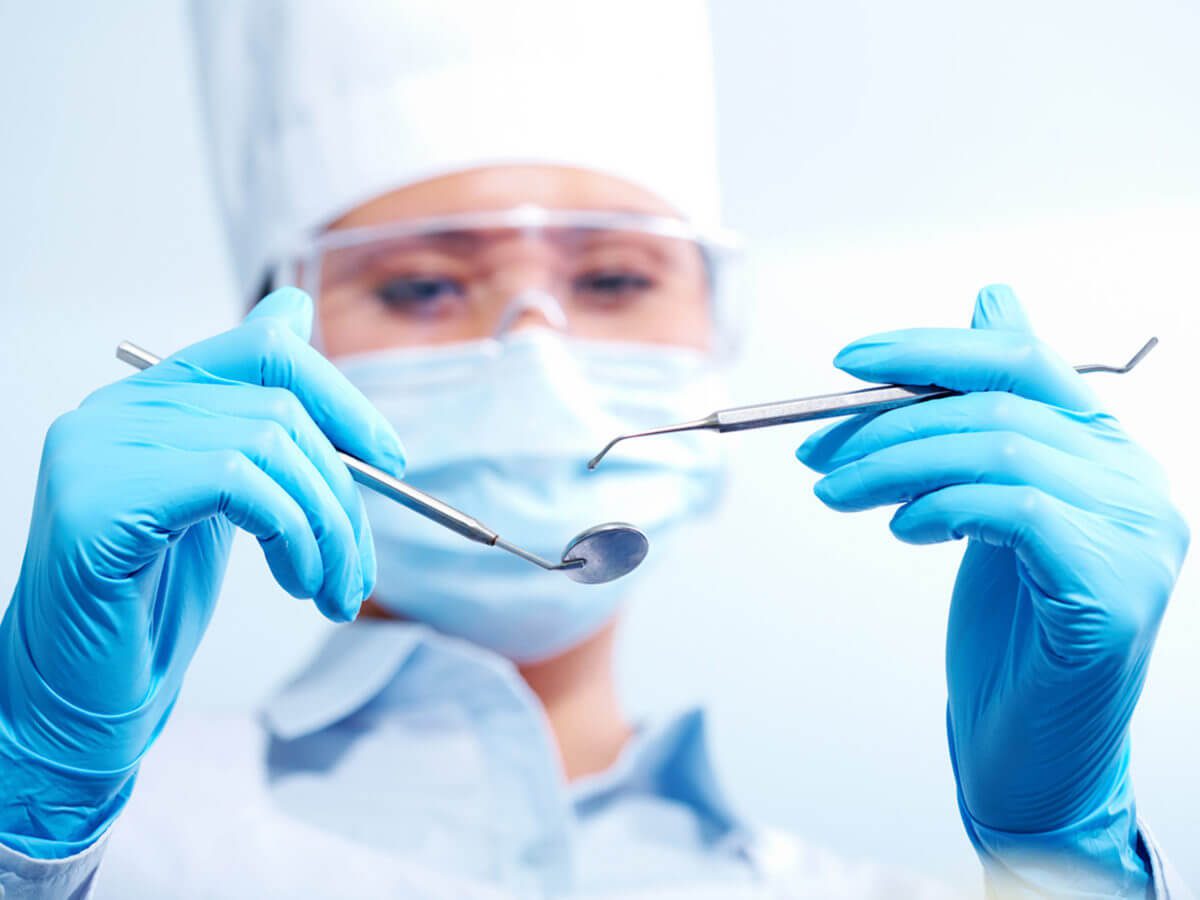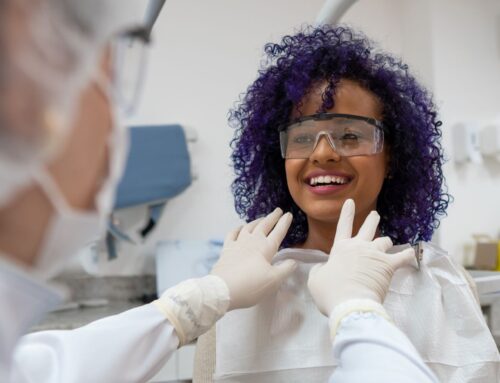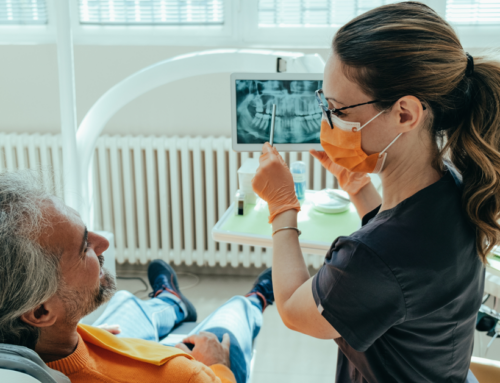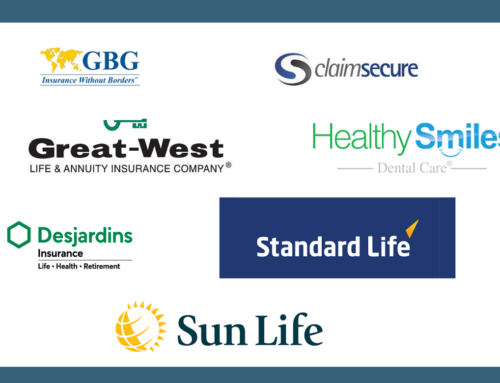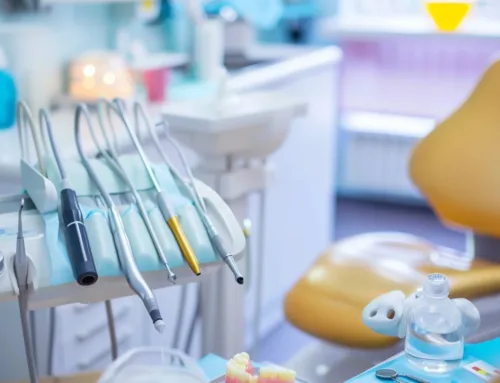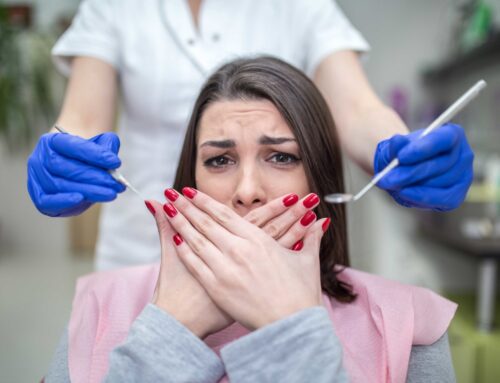Revealing the Truth About Common Dental Myths
To keep your teeth in the best possible condition, it’s vital that you follow the recommended routine of at-home oral care and regular dentist visits. However, there are many common myths and misconceptions about dentistry, orthodontics, and other aspects of oral care that might end up working against you. Today, we’re going to debunk these persistent dental myths and give you the truth about keeping your smile healthy.
If you’re anything like us, you strive to make your health a top priority and do your best to take care of your body and keep it as strong and resilient as possible. Things like regular exercise, proper nutrition, and good sleep are all essential to achieve this goal, but it doesn’t end there. The fact is, it’s also crucial to maintain a healthy mouth in order to support our overall well-being and prevent other health conditions from developing over time. However, like most other aspects of healthy living, there are an unfortunate number of myths about dental care that can actually have the opposite effect and negatively impact the health of your mouth and teeth.
Luckily, these myths are easily countered with some simple facts and basic science. We’ve compiled ten of the most common and persistent myths and misconceptions about dentistry, orthodontics, and at-home oral care habits, along with clear explanations of the actual truth you need to know. Let’s begin the list with a myth we see very often when examining patients teeth and gums during regular dental checkups.
Myth #1 – “Brushing harder will get your teeth cleaner.”
Facts: It’s easy to understand why this particular dental myth continues to spread. After all, scrubbing harder often does work better at cleaning floors, dishes, and many other things. However, when you push too hard with your toothbrush when cleaning your teeth, a number of potentially harmful effects can occur. For starters, overly-aggressive brushing can irritate and inflame the gums, making them sensitive and resulting in frequent bleeding. Over time, this can also lead to gradual gum recession that will begin to expose the roots of the teeth and make a person more susceptible to gum disease. Rapid and high-pressure brushing can also accelerate the wearing of tooth enamel, particularly if the bristles of your toothbrush are too firm or you are using a very abrasive toothpaste. It’s best to apply firm but gentle pressure when you brush, and use a soft-bristled toothbrush. In addition, make sure you brush for the recommended 2-minute duration in order to get the best possible results.
Myth #2 – “You don’t need to see the dentist if your teeth and mouth feel ok.”
Facts: This myth results from the common problem of ‘out of sight, out of mind’, where a potential health issue isn’t really thought about unless it’s visibly apparent or actually causing discomfort. The trouble with this is that many dental problems develop over long periods of time and are not immediately apparent. Regular checkups at the dentist are not only for having your teeth professionally cleaned. They’re also the time when your dentist will monitor the state of your mouth and look for the early warning signs associated with a wide variety of oral health conditions. It’s a preventive measure that allows your dentist to stop small problems from growing into big ones by treating them earlier. If you skip your regular schedule of dentist appointments because your mouth and teeth feel ok and aren’t causing you specific discomfort, you run a much higher risk of bigger dental problems showing up in the future.
Myth #3 – “It’s normal for your gums to bleed when you brush and floss.”
Facts: If you’re noticing small amounts of blood appearing when you’re brushing or flossing your teeth, it may be an early sign of periodontitis, also known as gum disease. You see, the process of brushing and flossing works to remove bacteria-laden plaque from the teeth and gums. However, if not removed, the bacteria can multiply and spread to the gum tissue, eventually leading to swelling, sensitivity, and infections. Gums in this condition are much more likely to bleed when brushing or flossing. As gum health improves through better oral care and professional dental treatments, bleeding will subside and become much less frequent.
Myth #4 – “You can avoid cavities by switching to sugar-free drinks and candies.”
Facts: Eating a lot of sugary snacks and sweets will certainly pose a problem for your teeth, but it’s not necessarily the sugar itself that’s to blame for all cavities. The reason sugar is so closely associated with cavities is because it creates an environment in the mouth where bacteria can thrive. As the bacteria feed off the sugar, they create an acidic environment that is harmful to the enamel of the teeth, gradually eroding it and causing it to weaken. Other types of foods can cause a similar acidic environment, as it’s the reaction with the bacteria that is the real problem. Sticking to sugar-free drinks and artificially sweetened candies won’t be enough if you don’t have a good routine at home for cleaning your teeth and gums to reduce bacterial build-up.
Myth #5 – “If your teeth are bright white, that means they are healthy.”
Facts: It might seem like teeth that are yellow and discoloured are clearly unhealthy, but the truth is that visual staining on the teeth doesn’t always mean poor health. On the other side, even the brightest, whitest teeth can succumb to cavities and many other types of dental health issues if not properly cared for. Sadly, while a tooth whitening treatment sure makes your teeth look pretty, it does not do anything to improve the inherent strength and toughness of the teeth. Surface stains may be unsightly, but they are generally not harmful to the overall health of the mouth. Regular brushing, flossing, and rinsing with anti-bacterial mouthwash takes care of bacteria and plaque, leaving your mouth healthy and resilient, even if the teeth themselves aren’t bright white.
Myth #6 – “Tooth whitening treatments damage the enamel of teeth.”
Facts: Another myth we hear about tooth whitening treatments is that if you do them too often, they can start to damage the teeth. The whitening compounds used in modern cosmetic dental treatments are specifically formulated to not have any adverse effects on the strength or integrity of the enamel or dentin materials that make up the structure of a tooth. This myth likely stems from cases where some patients have experienced a period of heightened tooth sensitivity after a tooth whitening treatment. This is a side effect that occurs for some people, as the whitening process can cause teeth to temporarily be more sensitive to hot or cold temperatures. These effects usually subside in a short period of time, and are not a sign that the teeth have been damaged or otherwise adversely affected by the whitening treatment.
Myth #7 – “It’s ok to have cavities in baby teeth since they’re going to fall out.”
Facts: There are several things about this myth that need to be unpacked, starting with the fact that cavities are not ok to have in your teeth, no matter what. Cavities can grow rapidly if they are not dealt with properly. Even in a baby tooth that is going to fall out, untreated cavities can grow to the point where they result in discomfort and pain when eating or speaking, or may even cause infections in the gums and surrounding tissues. Furthermore, telling kids that cavities are ‘no big deal’ can certainly have long-term detriments on their approach to oral health care and result in more frequent or severe cavities throughout adulthood because positive habits were not firmly established in youth. The simple fact is that prevention is the best way to avoid problems with cavities, but if they do occur in baby teeth, they should still be checked by a dentist to determine the best course of action.
Myth #8 – “Braces are just for teenagers and young adults.”
Facts: Just because the teenage years are typically when braces are recommended to address tooth misalignments and bite pattern issues, that doesn’t mean it’s the only age range where they can be used. In fact, adult braces are rapidly growing in popularity as more people are realizing that it’s never too late to get a better-looking smile. Getting braces is something that can be done at almost any age, and modern orthodontic technology has allowed the process to become easier, more comfortable, and faster than ever before. Traditional metal braces are still a very popular and effective option, but patients may also be able to select from low-visibility ceramic braces, fast braces for shorter treatment times, or super-comfortable Invisalign invisible braces to help straighten their teeth and get a perfect smile.
Myth #9 – “Dental x-rays are dangerous.”
Facts: Safety comes first in any dentist office, so you can be confident that when you are due for a new set of x-rays that the risks are absolutely minimal and your protection will be the top priority. The level of radiation that the body is exposed to during a routine set of dental x-rays is negligible, and has been shown to have no harmful effects to the patient. In fact, modern x-ray machines are so much more efficient these days, you are exposed to more ambient background radiation simply by living your life each year than you are from a dental x-ray. Ultimately, keeping your dental x-rays up-to-date is a critical part of your health care, so it’s best to make sure that you are following the recommended interval as described by your dentist.
Myth #10 – “You don’t need to floss if you brush properly and use mouthwash.”
Facts: Brushing is important, as is the use of antibacterial mouthwash, but neither is a substitute for interdental cleaning. The bristles of a toothbrush are simply not capable of maneuvering themselves in the tight spaces in between the teeth, and mouthwash does not have the physical agitation needed to loosen stubborn stuck-on plaque from these hard-to-reach spaces. The reason dentists recommend these three habits be used together is because of the combined effectiveness of brushing and flossing at removing harmful bacteria deposits from the teeth and surrounding gum areas, while an antibacterial mouthwash works to kill and rinse away loosened bacteria. Altogether, they leave the mouth clean, fresh, and healthy.
Follow the Truth, Not the Myths, for a Healthy & Great-Looking Smile
If you’re ever in need of advice regarding your dental care, the best thing you can do is book an appointment with the team here at Georgian Dental and come on in for a visit! Our friendly staff will happily answer any and all questions you have in complete detail, and get right to the facts with our professional no-nonsense approach. Whether you’re in need of a regular checkup and hygiene treatment, are curious about what options are available for cosmetic dental enhancements, or would like information on an advanced dental procedure, there’s no better time than now to get the dental care you deserve. We look forward to seeing you soon!
Appointment Request
If you’re interested in any of our procedures, and would like to meet with one of our dentists to discuss options, costs and get additional information, complete this short form and we’ll give you a call to arrange for a no-obligation appointment at our Barrie clinic.
